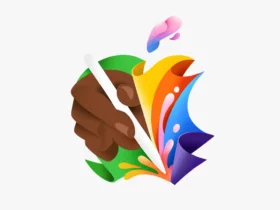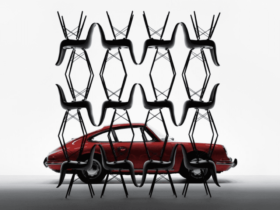Whoever does it alone, makes for three. This will surely be the proverb that has crossed the minds of managers Stellantis when they gave the green light to collaboration with Foxconn for the production of semiconductors. Stellantis and Foxconn, respectively one of the most powerful automotive groups in the world and one of the leaders in the production of chips, join forces. The target? Producing and selling semiconductors for the automotive market. So, Stellantis frees itself from that dependence on third party suppliers which, in the last two years, have brought not only the Italian-French Group to its knees, but the entire car industry. Let’s find out the details of this collaboration, which could bring an end to the huge crisis in the semiconductor market.
The perfect storm: Covid, market contractions and the semiconductor crisis
The past two years have been a real one perfect storm for the world of motors. Between the Covid-19 pandemic that has slowed the global market for two years, the uncertainty on environmental issues and global restrictions, the production of components has suffered a huge collapse, especially as regards the increasingly important semiconductors. But what are semiconductors? For those who still do not have a clear idea of what they are and what they have to do with the automotive world, the generic term “semiconductors” means all those electronic components that use semiconductors as a basis.
These special materials do use for realzzing the basic components of the chips, ie transistors, diodes, resistors and all the others fundamental components of electronics. Their name derives from their physical characteristic of being semiconductors. They therefore behave somewhere between a good conductor such as copper and an insulating material such as rubber. Semiconductors are therefore the basis of chips, which in turn are the systems underlying every electronic object. From the simplest items like appliances or remote controls to the more complex ones like computers, phones and, of course, cars, they all rely on chips.
But why was there a shortage of semiconductors in 2020? The reason is quite simple, but not easy to resolve. In the meantime, it is important to point out that to date there is no shortage of semiconductors as materials, which continue to be available in normal quantities. With “semiconductor crisis” today we mean the lack on the market of chips, transistors, resistors and everything that is produced starting from semiconductors. As you can imagine, in fact, chips are gods really complex systems to produce.
The semiconductor crisis in the automotive world
Tiny, with productions that work in the nanometer range, to produce the chips you need dedicated aseptic factories, with highly specialized personnel and a long, long time. In fact, a new chip production can take months, even years. Together with Covid, which blocked the importation of chips and forced manufacturers to concentrate existing chips on computers and electronic devices, abused in the era of smart working, international tensions have also been put in the middle. The tensions between the US, and the three countries at the top of semiconductor production, namely China, Taiwan and South Korea, have led to a contraction of chip exports.
The three countries produce and sell the chips to “friendly” countries or for internal production, while crumbs remain abroad. This situation has led to the uncovering of a Pandora’s path made of paradoxes. In fact, in the world of globalization and delocalization, entire industrial sectors have rediscovered themselves completely dependent on the production of only three countries. In addition, another paradox has sunk the automotive world. With most chips intended for use in consumer electronics, the car world has rediscovered itself divided in two. On the one hand we find i Chinese, Korean and Japanese manufacturers, able to access chips effortlessly and therefore able to produce cars without major sacrifices.
![]()
On the other hand, however, we find the American and European manufacturers, forced to trudge. Due to the absence of sufficient semiconductors for production, in fact, several manufacturers have found themselves forced to resort to extreme remedies. Those who, like Volkswagen and beyond, have been putting in place continuous stops at their factories for months, greatly reducing the amount of cars produced. Other manufacturers, such as the Stellantis Group, have come to produce simpler cars, without technological systems that are currently not feasible. A striking example was the last Peugeot 308 of the outgoing generation, sold with the analog instrument cluster since the digital one was simply not available.
Stellantis and Foxcomm’s solution: join forces to independently produce semiconductors
For a year now, the world’s largest automobile manufacturers have been trying to find one solution to this huge problem. Those who have still decided to stop production, those who instead thought of concentrating all the chips available on electric cars, more eager for these systems than a traditional car. In this, however, Stellantis once again stood out. The Italian-French-American group has indeed announced a collaboration with the Taiwanese semiconductor manufacturing giant Foxconn. For those who don’t know, it is Foxconn that physically produces the iPhones on behalf of Apple.
Car manufacturers have for years avoided making the chips themselves. Expensive and very time-consuming to produce, they require skills and expertise that car manufacturers simply do not have. For this reason, for decades we have relied on third-party producers. Today, however, this is no longer enough: with the chip market going crazy, it is crucial to be able to have free access to semiconductors. And Stellantis decided to do it in the most immediate and intuitive way: Fr.gnaw them independently. In fact, the agreement between Stellantis and Foxconn provides that the two companies create one from a close partnership family of semiconductors built specifically for Stellantis cars and for third party customers.
![]()
Therefore, with this collaboration with Foxconn Stellantis becomes a full-fledged chip maker. The Group chaired by Carlos Tavares and John Elkann, together with the giant Foxconn, it will also produce and sell semiconductors made specifically for the automotive market to third party customers. “With Foxconn, we aim to createand four families of chips that will cover more than 80% of our semiconductor needs. ”Said Stellantis CEO Carlos Tavares. “This will help significantly modernize our components, reduce complexity and simplify the supply chain. This will also increase our ability to innovate faster and build products and services at a rapid pace ”.
The new Stellantis-Foxconn chips at the base of the new STLA Brain architecture
The new chips produced by Stellantis and Foxconn will therefore be dedicated to automotive use. As obvious as this may seem, in reality the automotive world has often used semiconductors developed for other sectors, like that of consumer electronics. This feature, which on the one hand had the merit of lowering the prices of these components, on the other hand has the problem of competition for the supply of phones and PCs with the world. A problem that, up to 3 years ago, was considered minor, but which today is crucial for the entire production chain.
For this, Stellantis and Foxconn will undertake to produce chip capable of reducing the complexity of the semiconductors currently used. This will allow Stellantis to have ability and flexibility in the fields of software, updates and management of electronic systems, now more and more fundamental in the automotive world. The collaboration will exploit Stellantis’ role as automotive giant, which will therefore also be able to sell its chips to third parties, while Foxconn’s know-how regarding development, production and supply chain capabilities will be fundamental. supply.
![]()
“We look forward to sharing this expertise with Stellantis.” Said Young Liu, President and CEO of Foxconn. “So, together we will tackle the criticalities of the long-term supply chain, as we continue to expand the electric vehicle market. “. This new collaboration between Stellantis and Foxconn will be at the basis of the new STLA Brain system of the Italian-French Group. What is it about? In short, the STLA Brain will be there new electronic and software architecture which will be used by the next electric models of the Stellantis Group. The STLA Brain will be the basis of the models produced on the four modular STLA platforms: Small, Medium, Large and Frame. The STLA Brain system is natively ready for remote OTA updates, and will be one of the most advanced electronic car architectures on the market.
To see the first fruits of the Stellantis-Foxconn collaboration, the appointment is at 2024
This collaboration between Stellantis and Foxconn is therefore a real bombshell for the automotive world. In this way, Stellantis becomes independent for the production of chips, and it does so by relying on a colossus like Foxconn. It will certainly be the first in a long series of important announcements and decisions around the automotive world, which today as never before must absolutely find a way to become independent and strong on a component that will be increasingly important in the future.
As mentioned before, however, producing semiconductors is not a walk in the park: it takes time, skills and resources. For this reason, the first fruits of this collaboration will only be visible in just over two years. The STLA Brain system will be the first to make use of the Stellantis-Foxconn systems, and its debut is expected in 2024. In the meantime, however, Stellantis scored a big blow for long-term chip supply. And who knows that this move ahead of the competition, Volkswagen Group in the first place, may go to school, and does not turn out decisive in the fight for the first world manufacturer.















Leave a Reply
View Comments